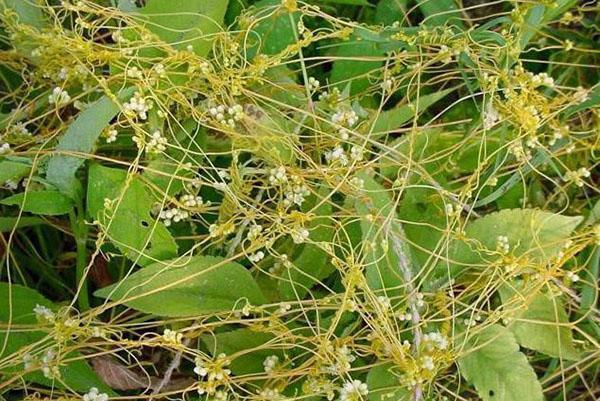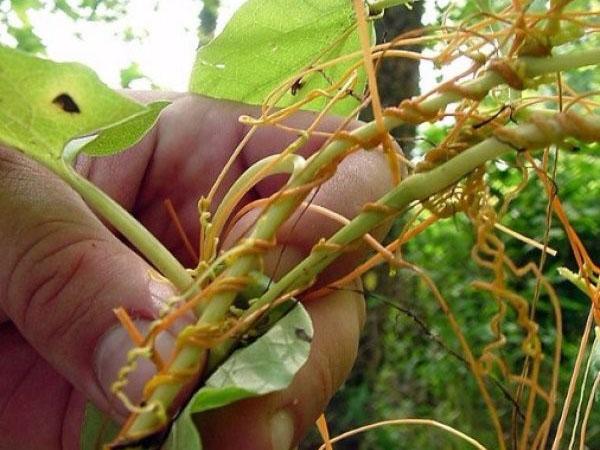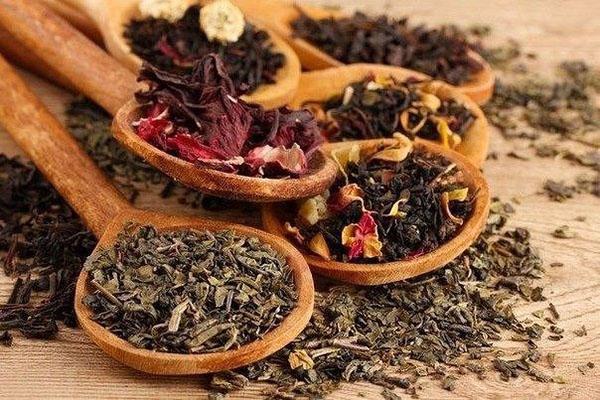How is dodder used in traditional medicine

Dodder is a climbing annual weed that does not have a root system and leaves. Dodder is widely used in folk medicine, as it contains many valuable biologically active elements. The long and thin stem grows very quickly and can be yellow or red. Dodder entangles any plant that comes its way and lives off of it. It releases special suction processes that deliver all the necessary substances and oxygen.
Reproduction takes place by seeds. Seeds germinate on the ground, but after the weed fixes on the host plant, the primary root dies off. The culture is poisonous, overdose causes harm.
The chemical composition and medicinal properties of the plant

Dodder herb is ubiquitous from the temperate latitudes to the tropics. An exception is the northern regions, where the climate is rather harsh. Weed often found in fields, vegetable gardens, orchards.
Dodder's chemical composition is extensive:
- glycosides and alkaloids;
- flavonoids;
- tannins;
- anthocyanins;
- pigments;
- coumarins;
- polysaccharides;
- organic acids;
- hormones and others.
Valuable biologically active components determine the use of dodder in traditional medicine. The plant has hemostatic, diuretic, analgesic, laxative, astringent, tonic, bactericidal properties. Dodder is used to normalize hormonal levels, activate human sexual function.
Dodder herb is almost completely devoid of chlorophyll. This is a special pigment that gives plants a green color and is an indispensable participant in the process of photosynthesis.
How is dodder used in traditional medicine

Dodder stems and seeds with ancient times were used for healing. The decoction of the plant gives a laxative and a diuretic effect, allowing you to get rid of constipation and edema. Eastern medicine knows recipes based on it to increase potency. She enters composition of fees for the treatment of cough, bronchitis and pneumonia. The plant has on the body has anti-inflammatory, tonic and tonic effect.
Dodder thins the blood and cleanses blood vessels. It is used as a hemostatic agent for internal and external bleeding. Antineoplastic and analgesic properties of dodder. It is effective in eliminating rashes diseases of the stomach and liver. With its help, alcoholism, angina pectoris, colic, prostatitis, nervous disorders, migraines, cancer.
Dodder recipes and preparation

The medicinal value is all parts of the plant. These are the stem, inflorescences, seeds. Grass harvesting is carried out in summer at the time of flowering - in June and July. Seeds are harvested in the fall after they ripen - in September and October. The method of preparing raw materials is drying. Permissible storage period harvested grass is 1 year in a dry and dark place. With prolonged and improper storage of useful characteristics is lost.
It is better for small children to use dodder externally - in the form of rinsing solutions, baths or lotions, rubbing.
Dodder in folk medicine - application of juice and infusion
Freshly squeezed dodder juice stops bleeding with skin damage. With severe bruises, gruel is applied from finely chopped stems.
For an infusion for 1 liter of boiling water, 1 tablespoon is taken dry herb dodder. The infusion is prepared within an hour. They rinse their mouth and throat, taken orally, make baths and lotions.
Dodder tea and broth

To prepare the broth, dodder seeds (1 tea spoon for 1 glass of water) boil for 5 minutes over low heat. Give liquids cool, then use topically and inside. For the treatment of the stomach and the duodenum is prescribed to drink a decoction of 1 tablespoon 3 times in day.
For a cup of boiling water, ½ teaspoon is enough tablespoons of dried stems or flowers. This tea is useful for women during the period painful menstruation. The amount of discharge is reduced, pain is reduced sensations in the abdomen.
Dodder tinctures

Acetic acid tincture. Fill a jar with a volume of 0.5 liters of fresh dodder, pour vinegar 9%. Acetic tincture is subject to a long storage in glass containers. With its help, warming compresses and applications are made on the joints.
Tincture for alcohol. To prepare the tincture, you will need dry dodder 4 heaped tablespoons, half a liter of high-quality vodka or alcohol. Combine the components in one container, mix. Store in a dark place in glass, shaking occasionally.
For therapeutic purposes, take a tincture of 30 drops once a day, for prophylaxis - 10 or 15 drops.
Applying dodder ointment

If dry dodder powder is mixed with butter oil, you get a healing ointment. It accelerates cell regeneration, removes inflammation and pain. The resulting composition is stored in the refrigerator. They are smeared with burns and frostbite, inflamed skin areas, purulent wounds, long non-healing cuts, bedsores and trophic ulcers.
Potential harm to the body

Many weeds contain poisonous substances. Harm dodders can appear at high concentrations, violation of the timing treatment and dosages. It is not recommended to use the plant during the period pregnancy and breastfeeding, for the treatment of children under 3 years of age. If after the first days of taking dodder, an allergic reaction is observed, then further it is recommended to stop using. With any diagnosis before the use of traditional medicine recipes, you should consult with your doctor a doctor.
Nausea, vomiting, diarrhea, dizziness, weakness, dry mouth are the first symptoms of an overdose. If they occur, dodder treatment should be urgently interrupted.
Dodder is harmful to agricultural plants, fruit and berry bushes and trees. It inhibits the growth and development of the crop on which it has settled, reduces productivity, and can cause it to weaken and die. However, due to its medicinal properties, dodder weed has long been known in folk medicine. It has a beneficial effect on the genitourinary sphere, immunity, reduces pain, relaxes smooth muscles, and stops the development of oncological diseases. It is used internally and externally in strict accordance with the doses acceptable for age and health conditions.